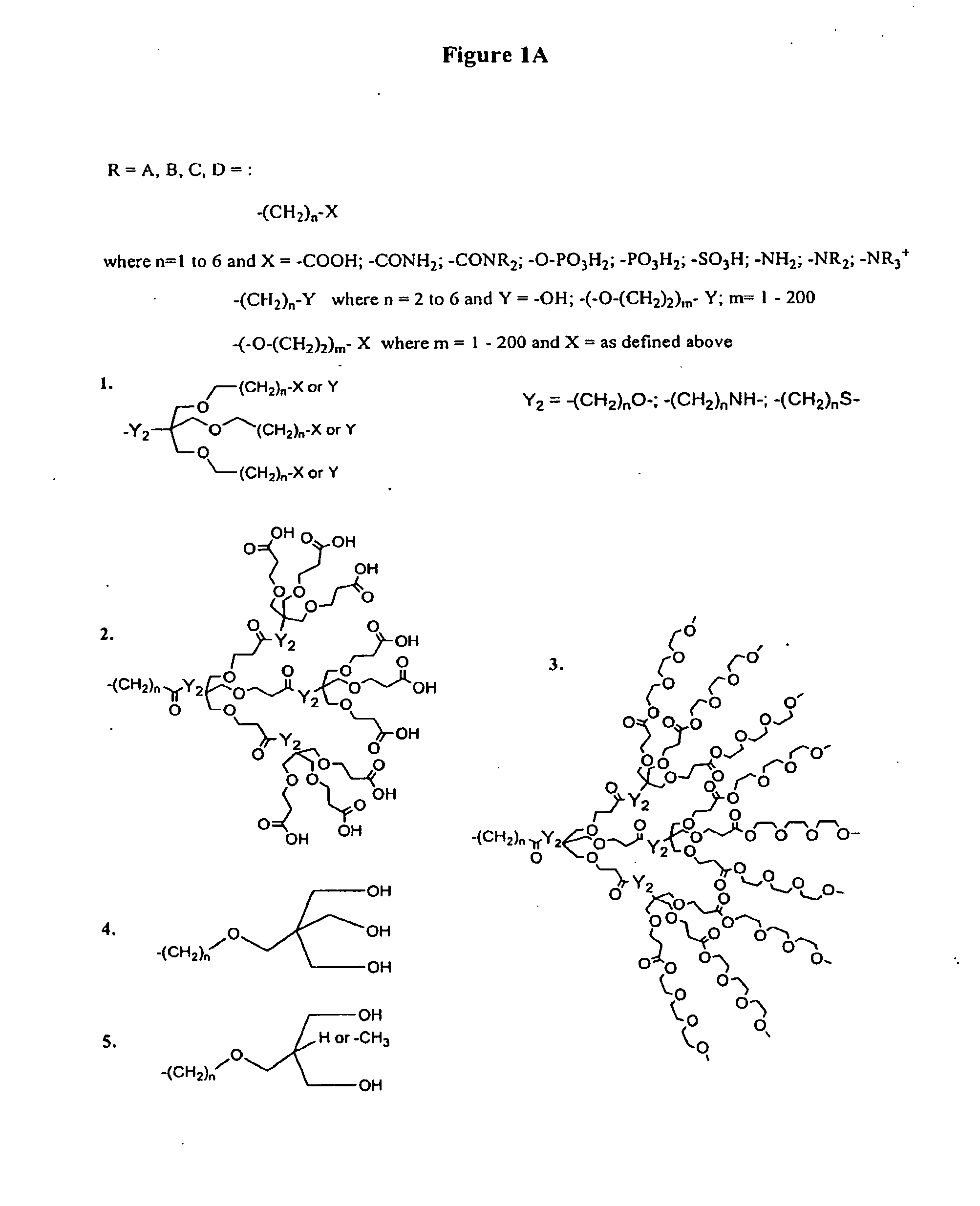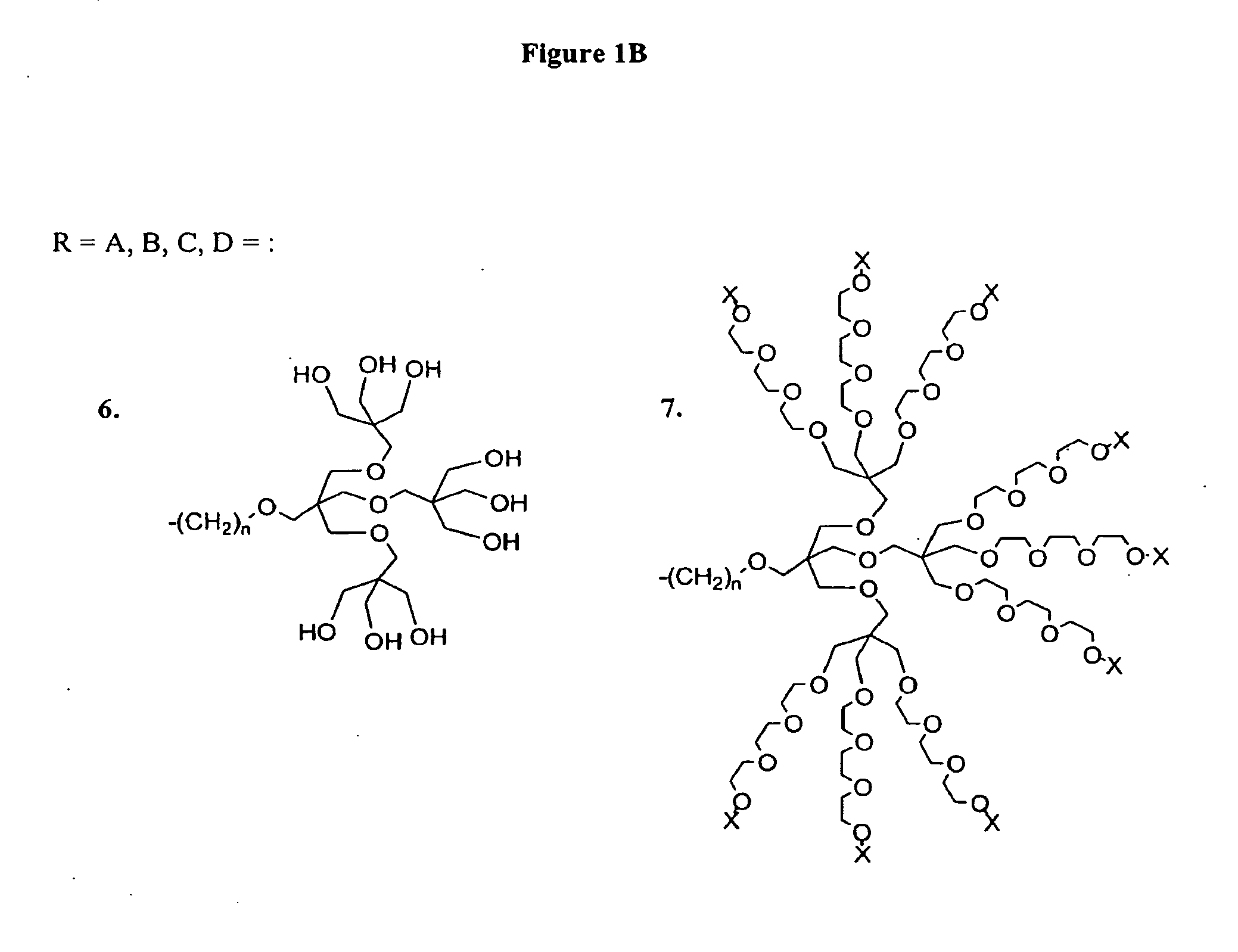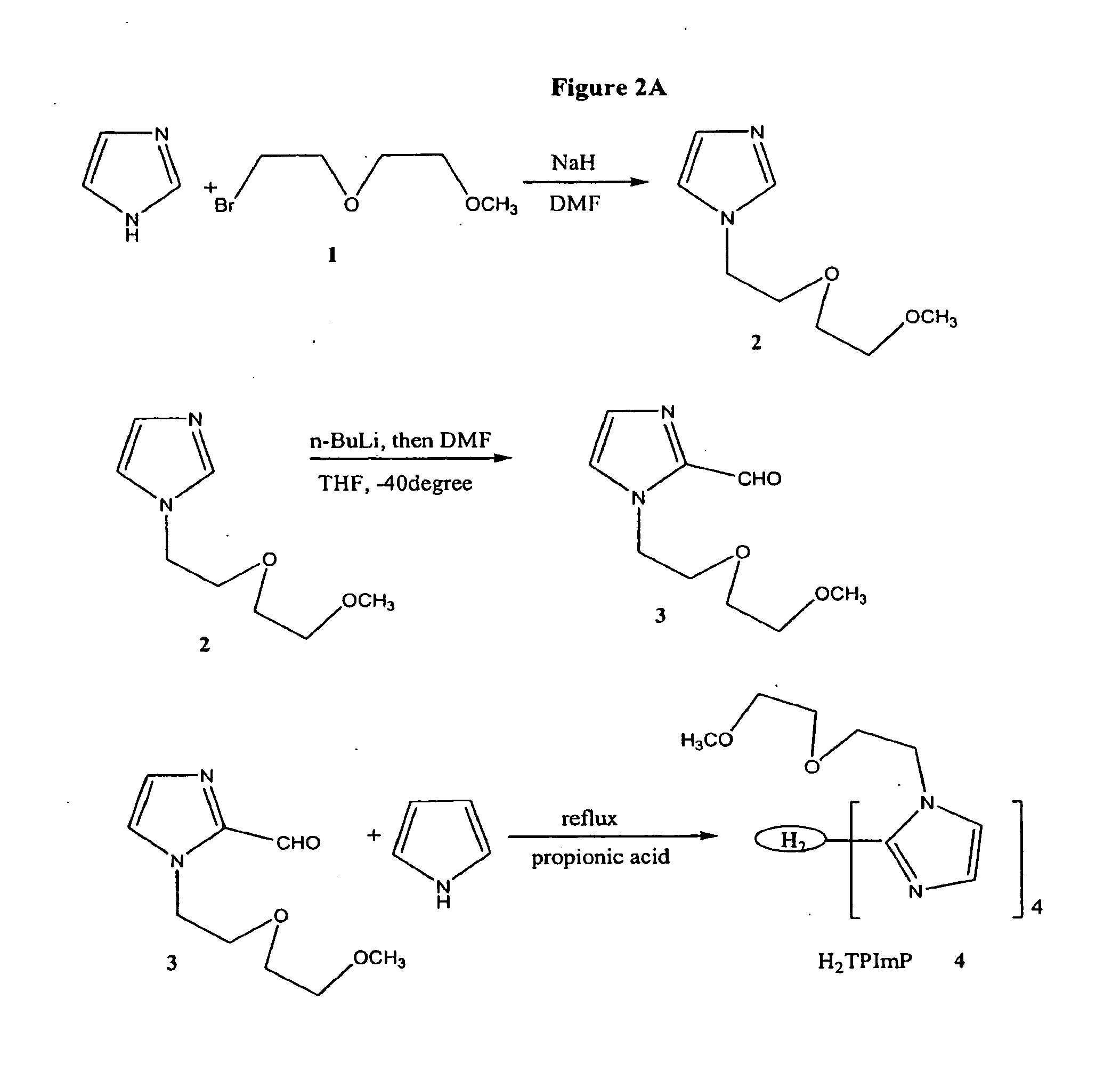Porphyrin Catalysts and Methods of Use Thereof
a technology of porphyrin and catalyst, which is applied in the direction of iron organic compounds, immunological disorders, metabolism disorders, etc., can solve problems such as damage to biological targets, and achieve the effects of high catalytic activity, enhanced lifetime in the blood pool, and high stability
- Summary
- Abstract
- Description
- Claims
- Application Information
AI Technical Summary
Benefits of technology
Problems solved by technology
Method used
Image
Examples
example 1
Synthesis of iron(III) meso-tetrakis(N,N-di-(2-(2-methoxyethoxy)ethyl)-imidazol-2-yl)porphyrin (6) (“FeTDPImP”)
[0136]FeTDPImp (FW: 1626.2 g / mol) was synthesized from a starting imdizaole compound using the following synthetic scheme. The synthetic scheme is shown, along with structures of intermediate products, in FIGS. 2A and 2B.
1. Synthesis of N-(2-(2-methoxyethoxy)ethyl)-imidazole (2)
[0137]Imidazole 1 g (0.015 mol) was dissolved in dry DMF 50 mL under argon atmosphere. After a NaH mineral oil dispersion (60%) 0.68 g (0.017 mol) was added, the mixture was heated at 80° C. for 70 min. After cooling to room temperature, 1-Bromo-2-(2-methoxyethoxy)-ethane (1), 2.75 g (0.015 mol), was added, then stirred overnight. The reaction was poured into water, extracted by CHCl3, washed by water, dried over Na2SO4, then dried (Rotavap) until an oily residue remained. The crude product was purified with silica gel flash column chromatography with an eluant of CHCl3: CH3OH=20:1. 1.69 g (70% yield...
example 2
Synthesis of (iron(III) meso-tetrakis(N,N-dicarboxymethyl)-imidazol-2-yl)porphyrin) (“FeTDCMImP”)
[0142]FeTDCMImP was synthesized from a starting imdizaole compound using the following synthetic scheme, which is shown along with structures of intermediate products, in FIG. 3.
1. Synthesis of H2TImP (meso-tetra-imidazol-2-yl-porphyrin) (9)
[0143]H2TImP was synthesized using one of two different pathways, that described in Milgrom et al., Tetrahedron, 1996, 29, 9877-9890, or that described in Milgrom et al., Journal of Molecular Electronics, 1991, 7, 95-100.
[0144]To a refluxing 125 mL propionic acid, −2.4 g (0.025 mol) of imidaxole-2-carboxaldehyde was added, then 1.675 g (0.025 mol) of pyrrole was added slowly. After refluxing for 1.5 hours, the reaction was cooled to room temperature, then placed in a refrigerator for 2 hours. The mixture was filtered, washed with chloroform, acetone, methanol and water to obtain 51 mg (1.5%) of purple solid as the product. The UV absorption and 1H-NMR...
example 3
Determination of Peroxynitrite Decomposition Catalysis
[0148]A high rate of peroxynitrite decomposition is an important indicator of biological activity in vitro and in vivo. The rates of reaction between peroxynitrite and various iron porphyrins were measured at several different concentrations of catalyst in phosphate buffer (pH=7.4). The ONOO− decay rate (M−1s−1) for FeTDMImP was determined to be 1.0×106M−1s−1, and the keat, for FeTDCMImP was measured at 4.6×105. In the same studies the decay rates for the iron porphyrins FeTDMImP, FeTDCMImP, FeTDPImP (see, e.g., U.S. Pat. No. 6,448,239) were 1.1×106. 4.6×105 and 1.9×106, respectively.
PUM
| Property | Measurement | Unit |
|---|---|---|
| Composition | aaaaa | aaaaa |
| Level | aaaaa | aaaaa |
Abstract
Description
Claims
Application Information
 Login to View More
Login to View More - R&D
- Intellectual Property
- Life Sciences
- Materials
- Tech Scout
- Unparalleled Data Quality
- Higher Quality Content
- 60% Fewer Hallucinations
Browse by: Latest US Patents, China's latest patents, Technical Efficacy Thesaurus, Application Domain, Technology Topic, Popular Technical Reports.
© 2025 PatSnap. All rights reserved.Legal|Privacy policy|Modern Slavery Act Transparency Statement|Sitemap|About US| Contact US: help@patsnap.com



